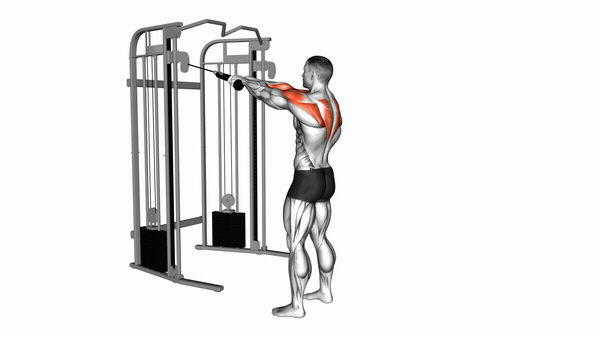To perform the Cable Standing Rear Delt Row, you will need the following equipment:
- Cable machine with a rope attachment
This exercise primarily targets:
- Primary: Rear Deltoids
- Secondary: Trapezius, Rhomboids
When it comes to variations of the Cable Standing Rear Delt Row, there are several effective alternatives that can help target the same muscle group while offering unique benefits. Here are a few variations to consider:
-
Cable Rear Delt Row: This exercise focuses on the rear deltoids and can be performed with a rope attachment. It emphasizes the pulling motion and helps improve shoulder stability. You can learn more about it here.
-
Cable Standing Cross-over High Reverse Fly: This variation involves crossing the cables while pulling them back, which further engages the rear deltoids and upper back muscles. It enhances shoulder stability and promotes better posture. For more details, check out this exercise here.
-
Barbell Rear Delt Raise: This free-weight exercise targets the rear deltoids effectively and can help improve overall shoulder strength and stability. It also allows for a greater range of motion compared to cable exercises. You can find more information about it here.
Each of these variations offers distinct advantages, such as improved muscle engagement and versatility in your workout routine. Trying them out can help you discover which one works best for your fitness goals. So, grab your equipment and start experimenting with these exercises to enhance your shoulder training!
The Cable Standing Rear Delt Row is a fantastic exercise for targeting the rear deltoids and improving shoulder strength and stability. By following proper form and avoiding common pitfalls, you can maximize your results. Ready to develop those shoulder muscles? Start including the Cable Standing Rear Delt Row in your training routine today!
Load More










